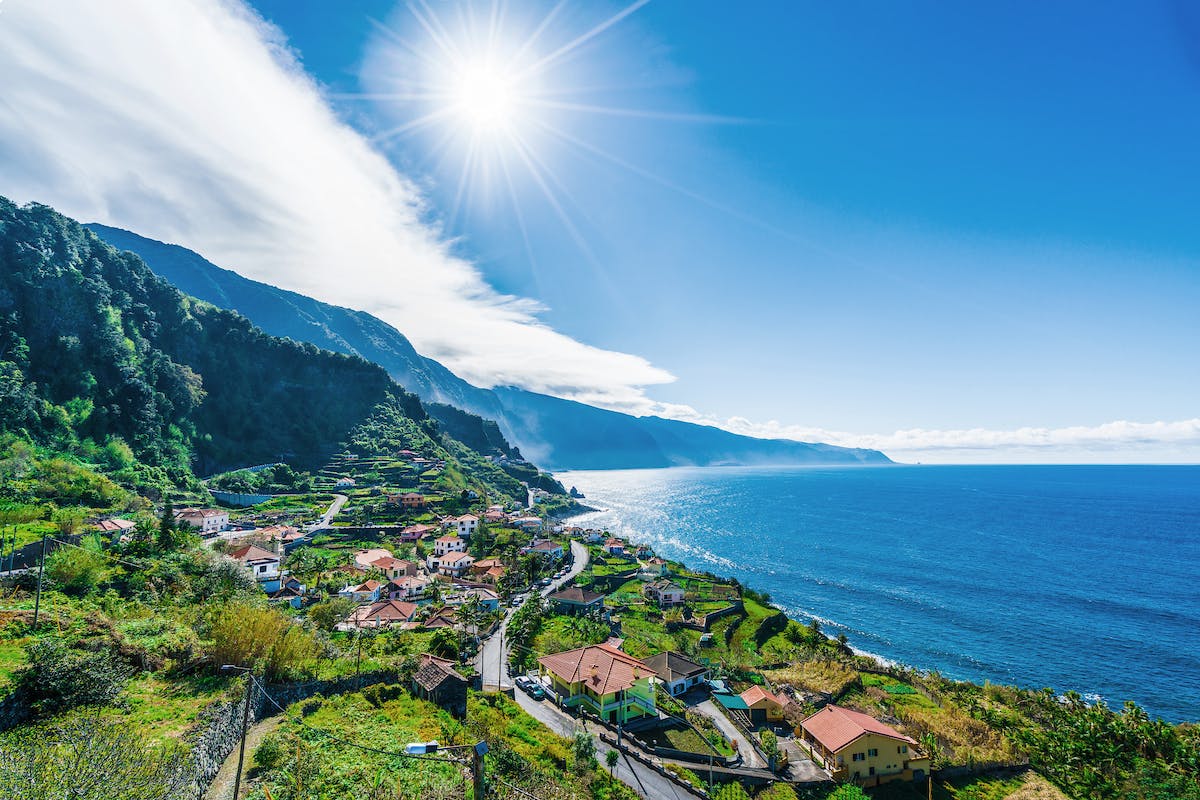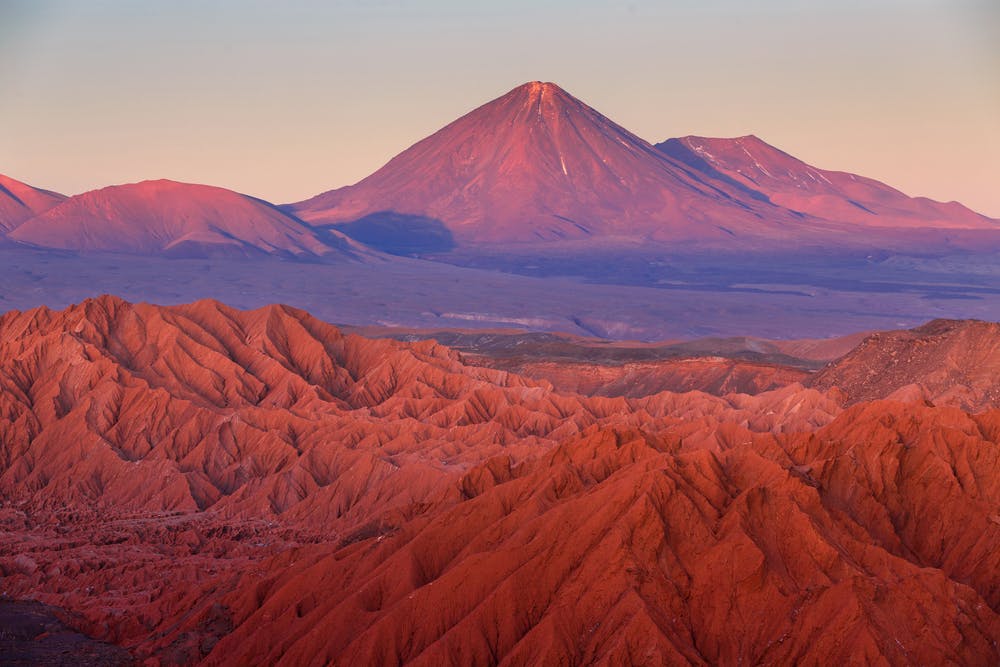Travel to Madeira to Explore Portugal’s Atlantic Pearl
Admittedly, I am passionate about islands and island life. I was lucky enough to grow up in Hawaii, and my petite passion later metamorphosed into a well-honed obsession. Not just for the tropical wonderland I called home for so many years, but for all islands. Whether near, far, cold, warm, large, small, inhabited or not. From Alcatraz to Zanzibar and dozens in between, traveling to and experiencing them has been one of my life’s greatest joys. I found a new favorite recently when I was able to travel to Madeira.
After an autumn sojourn in Portugal — recently named the number one country destination in Condé Nast Traveler’s Readers’ Choice Awards — I discovered this semi-tropical gem. A Portuguese autonomous region, with its own parliament and president, it’s part of a North Atlantic archipelago closer to North Africa than Europe. Though small — Madeira is just 35 miles long and 14 miles wide — with a population of 250,000, it has a charming capital, excellent cuisine and, of course, Madeira wines. Its volcanic genesis and relatively isolated location provides dramatic natural geography resulting in awe-inspiring architectural and engineering marvels.
Several of Silversea’s transoceanic and Mediterranean itineraries offer the chance to travel to Madeira, calling in its capital Funchal and providing guests opportunities to experience the island’s many attributes. Whether one wants to experience Madeira’s unique toboggan ride, feast on Portuguese pastries, stroll through mystical botanical gardens or simply enjoy the namesake wines, Silversea’s well-curated excursions promise Portuguese-style adventures.
Food and fun in Funchal
Funchal — where most Madeirans live — has basalt and limestone cobblestone streets and red-tiled roofs on structures that seem impossibly built into hillsides. Downtown is a stone’s throw from the cruise port, so Funchal is best enjoyed on foot where cafés, restaurants and its major historic attractions such as the Sé Cathedral can be easily explored.
The Portuguese in general are rather obsessed with pastries and coffee, and Madeirans are no exception. Indeed, most social discourse occurs with pasteis de nata — Portugal’s signature egg custard pastry — and espresso or café com leite. A bakery on nearly every corner, sometimes two, entice even the most strident carb-avoiders. Trying pasteis at several different bakeries and cafés, I can vouch that each was my favorite. Funchal’s Ritz Café is great for people watching, high tea and art lovers as the building’s exterior, punctuated with blue-and-white 20th century Azulejo tiles, reflect old Madeiran life.
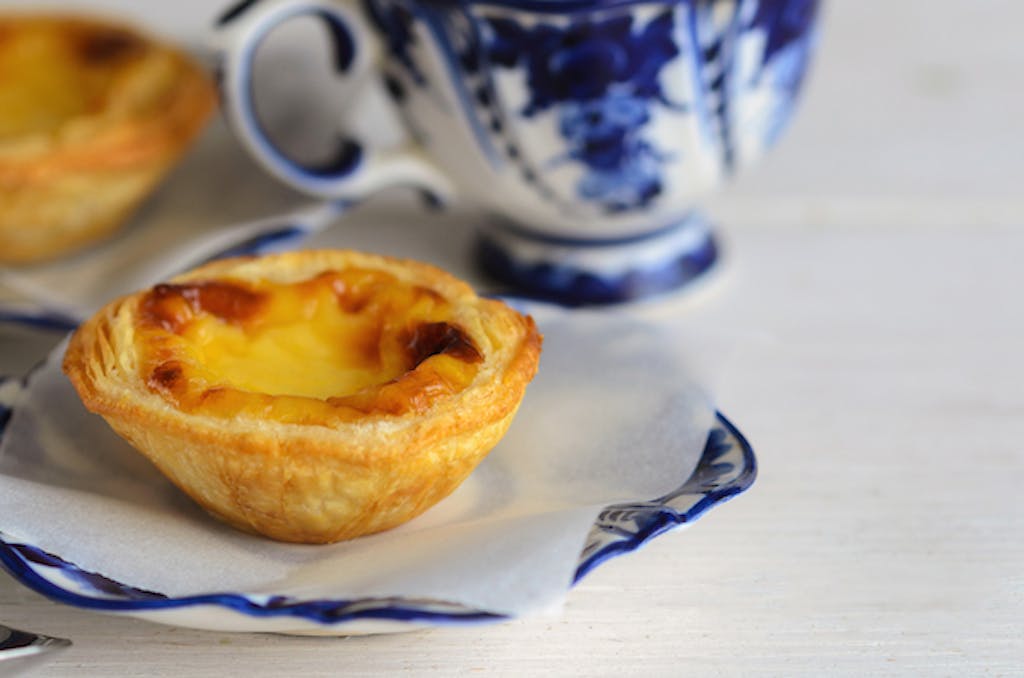
Foodies who love to dine with a constellation-like view will rejoice at Galàxia Skyfood, on the top floor of The Savoy Palace Hotel. With a starlit ceiling overhead reminiscent of a Rolls-Royce headliner and wide-angle views of the Atlantic abyss, a sense of suspended animation ensued while devouring a four-course menu under the direction of Chef César Abreu, paired with wines selected by Sommelier André Ferraz. It’s no surprise that there are Michelin mumblings on Galàxia’s horizon.
In Old Town, Rua Santa Maria is known for its artfully painted doors — there are over 100 — but in the evenings it pulses with lively outdoor cafés, bars and restaurants. A typical Madeiran dish of espada preto — black scabbard — is tender and delicious, especially when served with bananas and passion fruit sauce as I enjoyed at Santa Maria Restaurant. Scabbard, a deep-water predator fish, has a slithery, eel-like shape and elongated face with ultra-sharp dentition that perhaps only a fish mom could love. I’m glad I ate it before seeing it whole on ice.
Just below Old Town, the Teleférico do Funchal provides a scenic 15-minute cable car ride 1,800 feet up to Monte Palace Tropical Gardens. One of the world’s best botanical gardens, it’s a hilly, globe-trotting adventure — no passport needed — with tiled renditions of the Portuguese era in Japan, grand Chinese gates and bridges, a plethora of swans, ducks, waterfalls, statuary and, allegedly, the world’s tallest ceramic vase. There’s also a museum with a compelling collection of Zimbabwean stone sculptures and a mineral and gem exhibit.
Nearby, the twin-towered Church of Our Lady of Monte is perched hillside. Next to its nave rests the crypt of Charles I, the House of Hapsburg’s last monarch. In the reshuffling aftermath of World War I, he was exiled to Madeira in November 1921 and died of pneumonia in Monte five months later.
An experience unique to Madeira is the 1.3-mile toboggan ride from Monte to Livramento. Seated in a modified wicker basket, two men rope steer from behind as the toboggan speeds downhill on a smooth, steep, narrow trajectory. Did I mention the coachmen have only the thick soles of their rubber boots to brake? Once described by a CNN reporter as “One of the world’s coolest commutes,” I would add terrifying, yet exhilarating fun. I also hope the coachmen’s cobblers receive a hefty premium in braking gratitude.
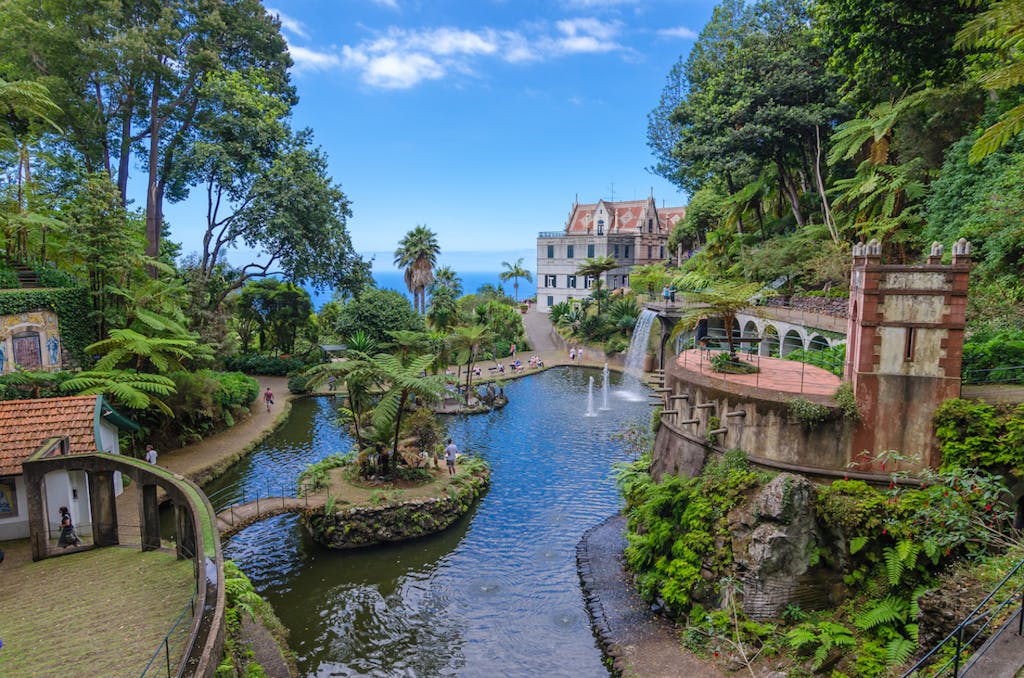
The wines of Madeira
Wine is an integral part of Madeiran history, replacing sugar as its economic mainstay. It’s also part of island geography. Outside Funchal, terraced vineyards sit on every inch of available land in competition with ubiquitous bananas. A good place to appreciate how wine shaped Madeiran life is at Blandy’s Wine Lodge in Funchal.
Established in 1811, Blandy’s original main structure was at various times a prison, church, monastery and hospital. Today one-third of Madeiran wines are produced by Blandy’s. Only those wines that are fortified with 96-percent grape alcohol spirits, oxygen-exposed and locally produced can claim the Madeira wine moniker. Over the years, Blandy’s has influenced Madeiran life as the family’s involvement stretched to include shipping, hotels and newspapers. After viewing excellent photographs reflecting Madeira’s wine history evolution, I enjoyed the sweet nectar in Blandy’s tasting room.
In addition to sweet, fortified wines, a handful of smaller boutique wineries around the island produce very good table wines. At Quinta do Barbusano, in the north near São Vicente, proprietor António Oliveira in 2006 made wine-making his second career. Tasting several bottles of his bounty, favorites were his 2015 Ponta do Tristao — a perfect marriage of Portuguese Verdelho and German Arnsburger grapes — and an excellent 2017 Tinta Negra Aragonez, a Rosé much darker and fuller bodied than traditional ones. Though Barbusano produces just 90,000 bottles a year, resulting from 61 acres under vine, his labor of love is lovely.
Adventure in the Atlantic
For outdoor enthusiasts, Madeira is bliss. At Ponta da São Lourenço peninsula — the island’s easternmost tip — I hiked several miles amid breathtaking cliff and bluff scenery within protected parklands. Near the top I was rewarded with local limpets — marine mollusks — in garlic butter at Casa do Sardinha Nature Spot Café. Batteries sufficiently recharged, I kayaked through calm, pristine cobalt blue waters past cliff-perched seabirds and massive rock formations.
Madeira has seven microclimates. Generally, the north is rainy and lush while the south is sunny and dry. To distribute the north’s life-sustaining liquid to irrigate sugar plantations, 16th century Madeirans started developing a unique system of channels and aqueducts. Today these levadas, covering over 900 miles, provide water to vineyards, farmers and gardens. Several of the 200 levadas have flat, walkable footpaths alongside them, allowing opportunities to see more remote parts of the island including ts unique flora, fauna and abundant waterfalls.
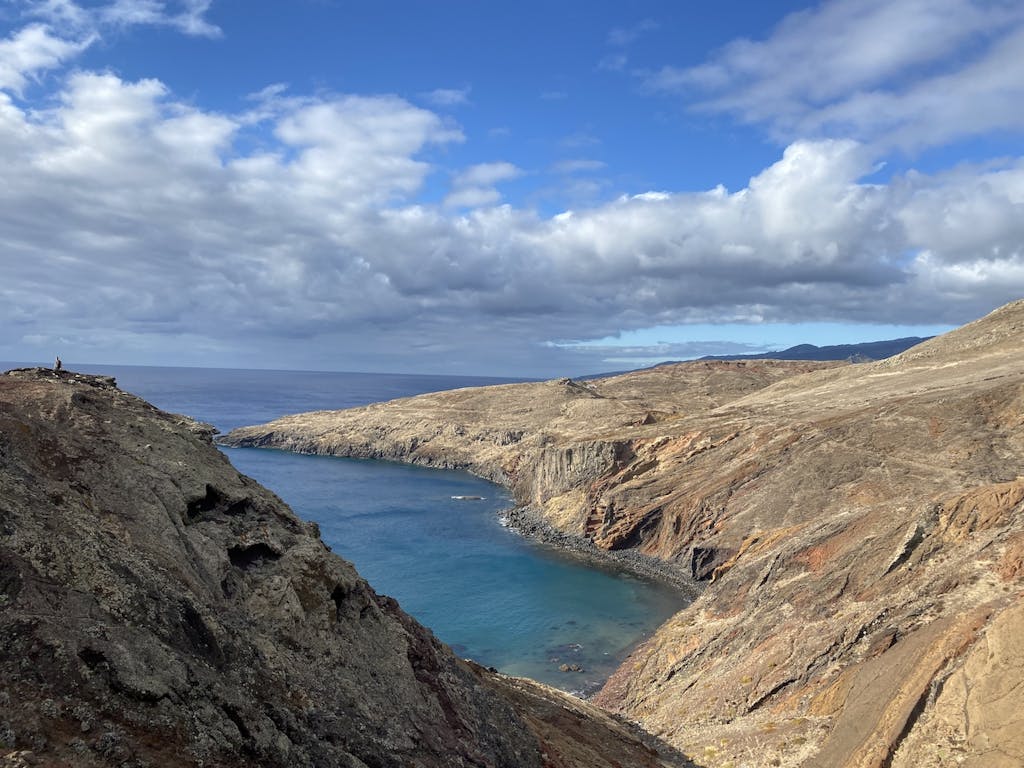
In Madeira’s northeast lies Porto Moniz, a remote coastal village famous for its natural lava rock pools and ethereal scenery. Views were so otherworldly — a lunar landing came to mind. Even though it was cloudy that day, waters were still a balmy 70 degrees. Nearby Seixal Beach, the island’s only black sand beach, sits in contrast to towering emerald green mountains and frothing waterfalls.
On Madeira’s southwest side rests a trifecta of small, charming towns. Ribiera Brava with its small ornate church, Igreja de São Bento, has a signature black-and-white tiled clock tower set against a terraced, banana grove backdrop. Ponto do Sol, known for striking sunsets and rock formations, possesses steep, vertigo-inducing hillside construction. Further west, quaint Calheta has a small marina and two beaches with sand imported from Morocco.
Madeira has pretty much everything a traveler could desire: good weather, excellent food, a walkable capital and natural adventure aplenty, all set within a dramatic geographical environment. Then there’s Madeira wine. In William Shakespeare’s play Richard III, Shakespeare writes that the Duke of Clarence, King Edward IV’s brother, meets his maker by drowning in a vat of Madeira Malmsey. I suppose if one could select a manner of execution for treason, asphyxiating in a barrel of Madeira wine would probably be ideal.
Ready to travel to Madeira and experience more gems of the Mediterranean? Start by exploring Silversea’s Mediterranean cruises.



